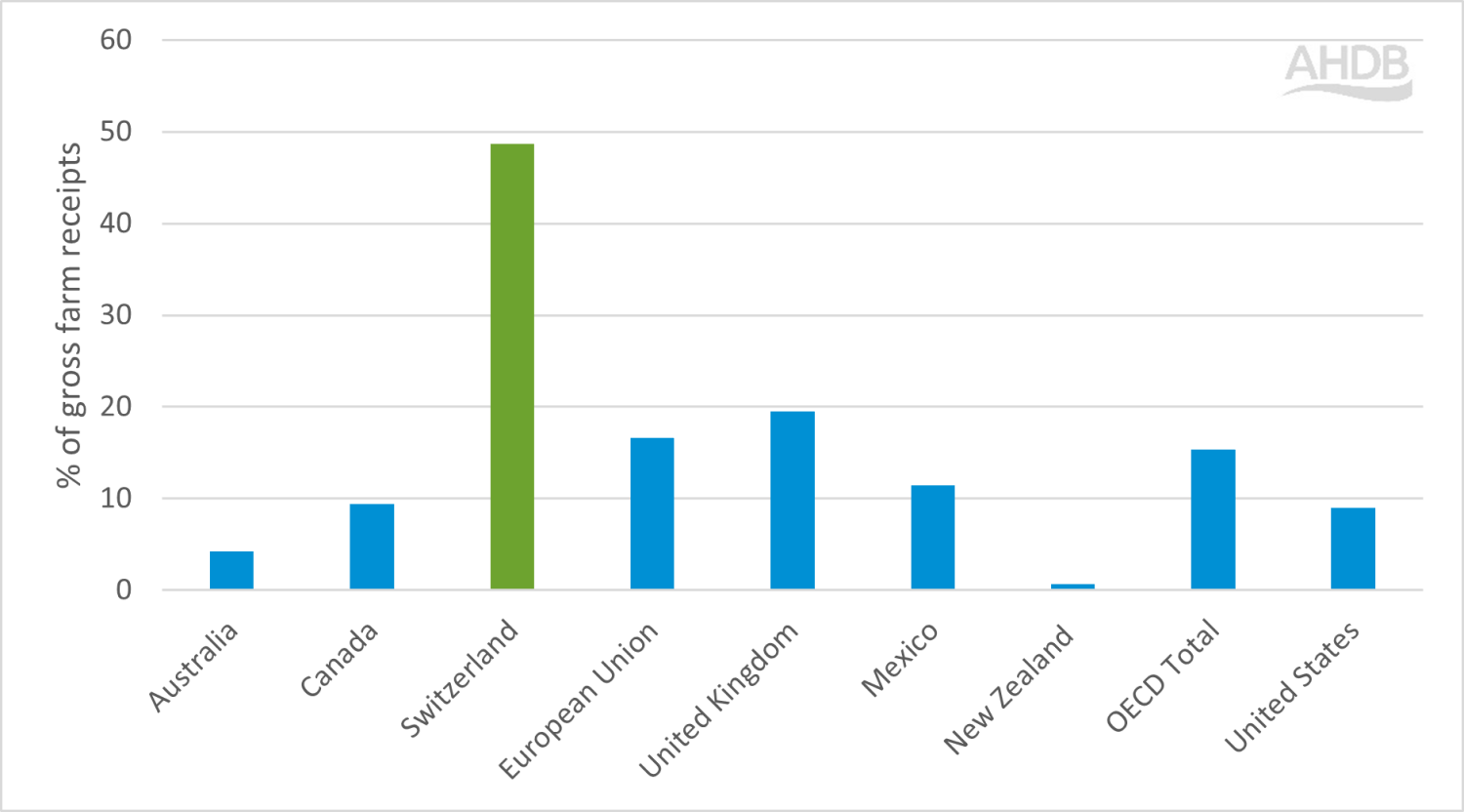- Home
- Agricultural policy in Switzerland
Agricultural policy in Switzerland
Switzerland has one of the highest GDP per capita in the world, largely driven by the services sector. Agriculture accounts for about 4% of GDP and 2% of employment. The Swiss landscape is varied: about two-thirds of the land area is mountainous. Consequently, good agricultural land is rare, and holdings tend to be small, having an average size of 16 hectares.
Agriculture in Switzerland consists of both arable and livestock farming. Livestock are mostly bred to produce dairy products. Most Swiss agricultural produce ends up in the domestic market, although some dairy and cereals products are exported.
Although agriculture makes up a small proportion of GDP, it uses around half of the surface area of the country; it therefore makes a major contribution to protecting and preserving the landscape.
Reforms of policy and dominance of support
Agricultural policy in Switzerland was dominated by high trade barriers and strong domestic market regulations, and there was a closed market until the 1990s.
In the late 1990s, policy reform resulted in the implementation of direct payments, cross-compliance requirements and a reduction in import protection and other market regulations – as well as improvements in transparency.
Between 2004 and 2013, there were policy reforms which focused on the deregulation of agricultural markets. There have been no policy reforms since 2013, though updates are expected after 2025.
According to the OECD, the total Swiss government financial support to its agriculture sector amounted to around 1% of GDP in 2019–2021, which was predominantly provided to individual producers. Such direct payments are the main source of support to Swiss farmers and make up almost half of the total (see Figure 1). This is more than twice the support provided by governments in other countries.
Figure 1. OECD producer estimate of amount of annual financial support (2020–2022 average)

Source: OECD 2023
What are the aims of agricultural support?
The overall goal of Swiss agricultural policy is to increase food production and agricultural trade at a national and international level in an environmentally sustainable manner.
The key principles of Swiss agricultural policy are:
- Reliable provision of foodstuffs to the Swiss population
- Preserve natural resources
- Upkeep of the countryside
- Encourage decentralised settlement
- Guarantee animal welfare
Main policy instruments
There are two main types of policy instrument in Switzerland that affect agriculture: basic and additional direct payments.
Direct payments for basic service
Direct payments were introduced in 1993 as compensation for farmers growing food and preserving the environment. The payments are intended to help farmers ensure food supplies are reliable and that the landscape they farm is maintained. Those who farm in upland and mountainous areas receive additional payments, due to the more difficult farming conditions.
Additional ecological direct payments
Swiss farmers can receive additional direct payments if they meet certain ecological requirements. These requirements cover the following topics:
- Ecological compensation areas
- Rational use of fertilisers
- Crop rotation
- Soil protection
- Specific use of plant protection products
- Animal welfare
In 2022, further measures around fertilisers and pesticides were introduced. These measures aim to reduce the use of some pesticides by 50% by 2027, and to reduce nitrogen and phosphorus losses by 20% by 2030.
Climate change
Switzerland adopted a long-term climate strategy in 2021 which fulfils the terms within the Paris Agreement. The terms of the Paris Agreement require countries to develop long-term climate strategies to be net zero by 2050. Switzerland’s plan shows it can reduce emissions by around 90% of 1990 levels by 2050, with remaining emissions able to be balanced with negative emission technologies.
Since then, the main focus of food and farming policies, that have been either planned or brought into force, is on funding research and projects which improve the sustainability of agricultural products. There is a lot of focus on technical optimisation, with the aim of improving the efficiency of inputs and using renewable energy resources.
Back to
Hubpage: The impact of a UK–Switzerland Free Trade Agreement on UK agriculture
Continue reading about the UK–Switzerland FTA
- Introduction
- Trade between the UK and Switzerland at a glance
- Switzerland trade and production
- Consumer demand: Is there a market to export more UK red meat and dairy to Switzerland?
- Switzerland's Free Trade Agreements
- Economic modelling of the beef, sheep, dairy and pork sectors (coming soon)


